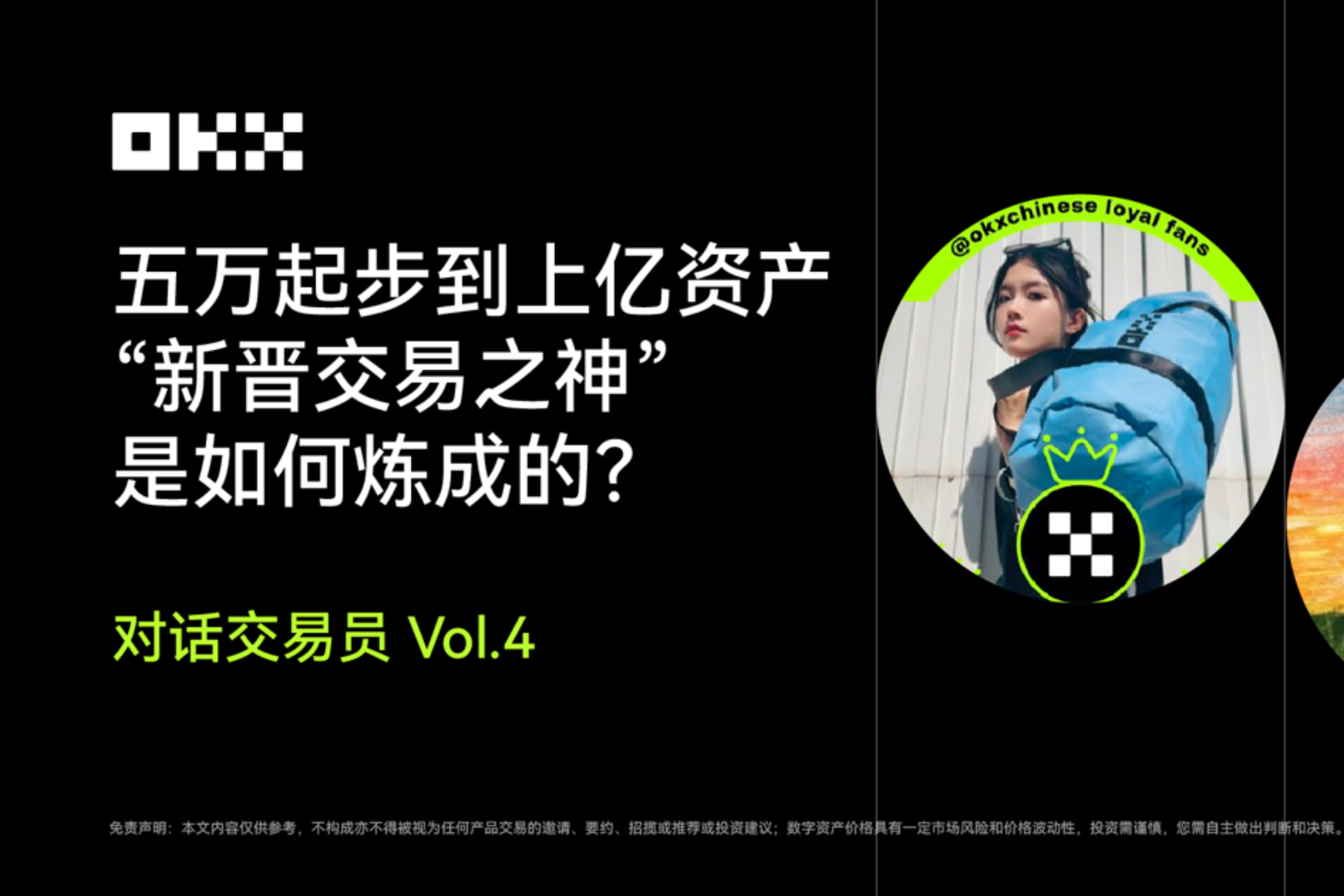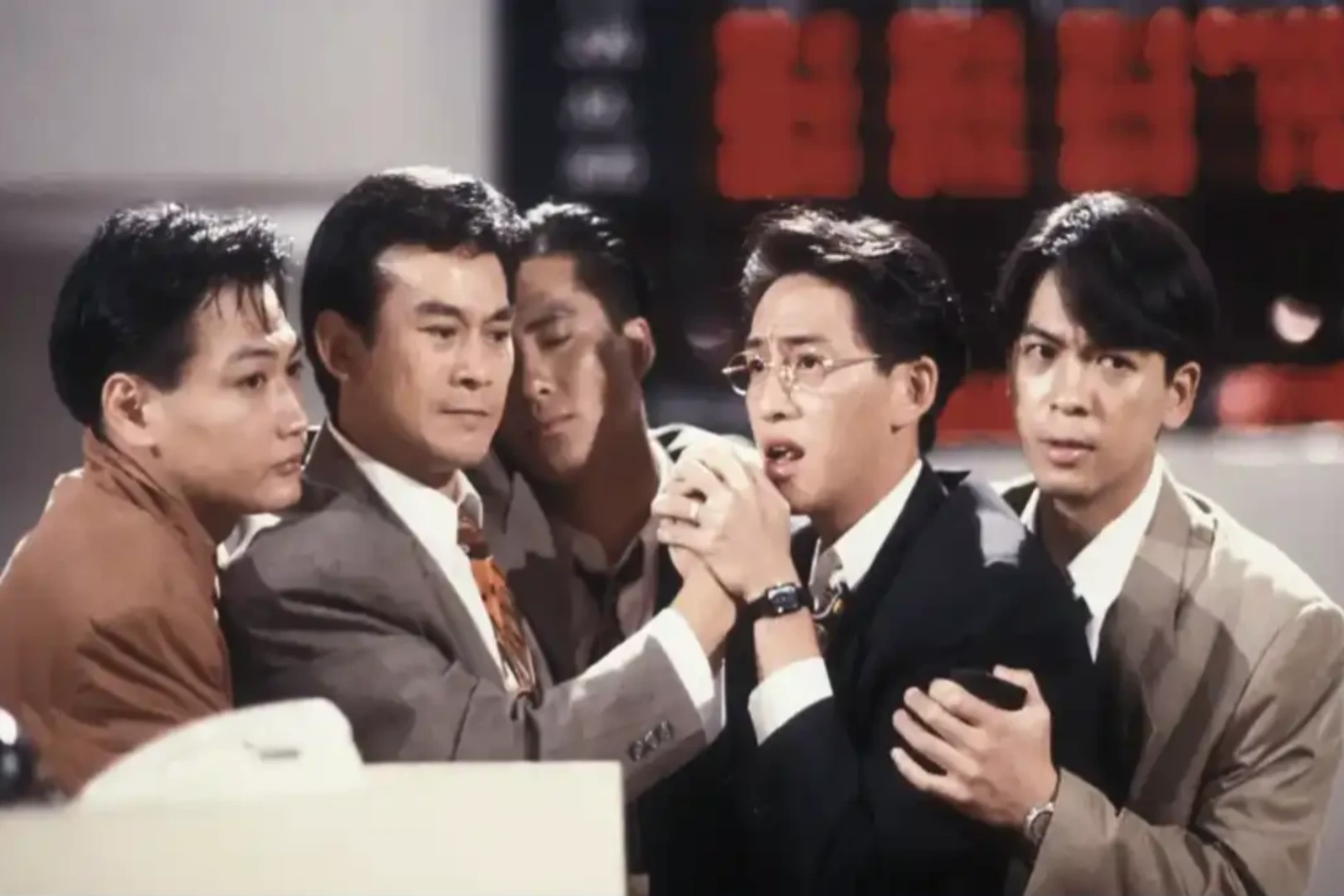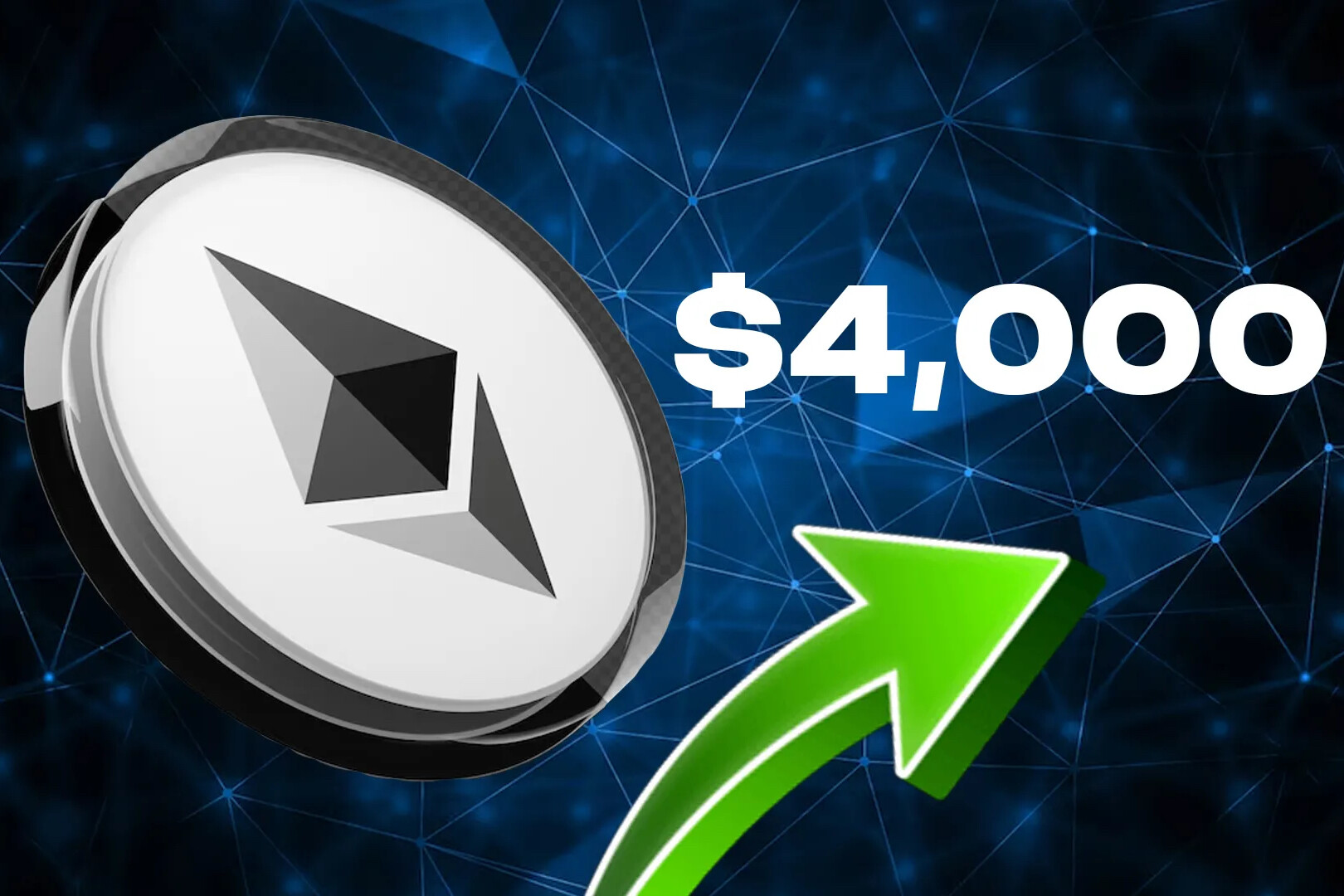Original title: "Chain Games: Don't just wait for the day and night, but hope for a hundred years", author Chen Yushan
DeFi has entered a downturn, low volatility and low gas fees have pushed blockchain games into the GameFi stage
As of July 30, 2021, the chain game market has attracted nearly US$1 billion in investment, and the amount for the whole of 2020 is US$72 million.
The blockchain rebuilds the game development model, and the "three carriages" theory can explain how the blockchain drives the development of the game economy.
The game time is "valued", players deeply participate in the game, and the reconciliation between the game and reality is pushed to another peak.
The gamification of the blockchain rather than the blockchainization of the game, the name of the game as the blockchain, but the calculation of funds.
first level title
secondary title
text
text
text
text
text
text
text
text
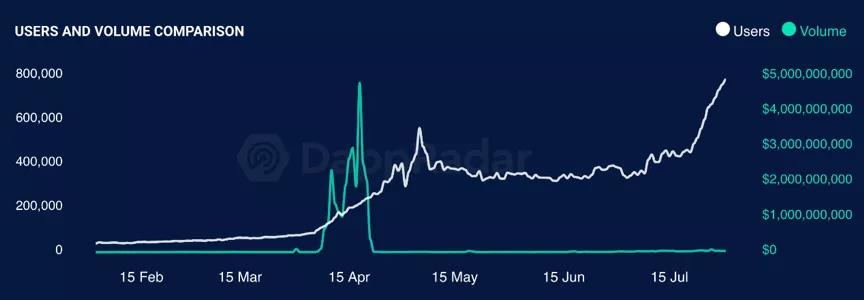
Data source: DappRadar
text
text
secondary title
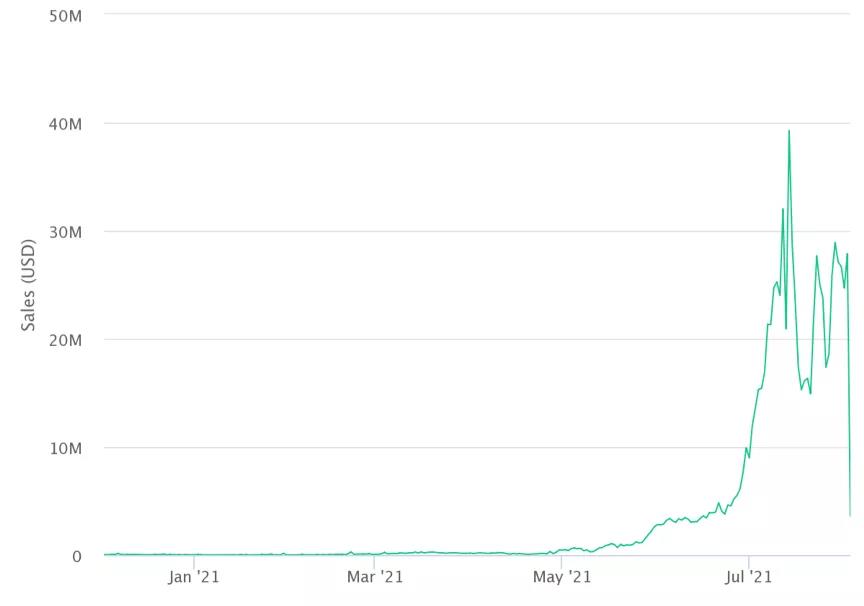
Data source: Cryptoslam
(2) Classification, transaction and financing of blockchain games
DappRadar data shows that the current number of blockchain games is 798. Various blockchain games are competing on different tracks.
image description
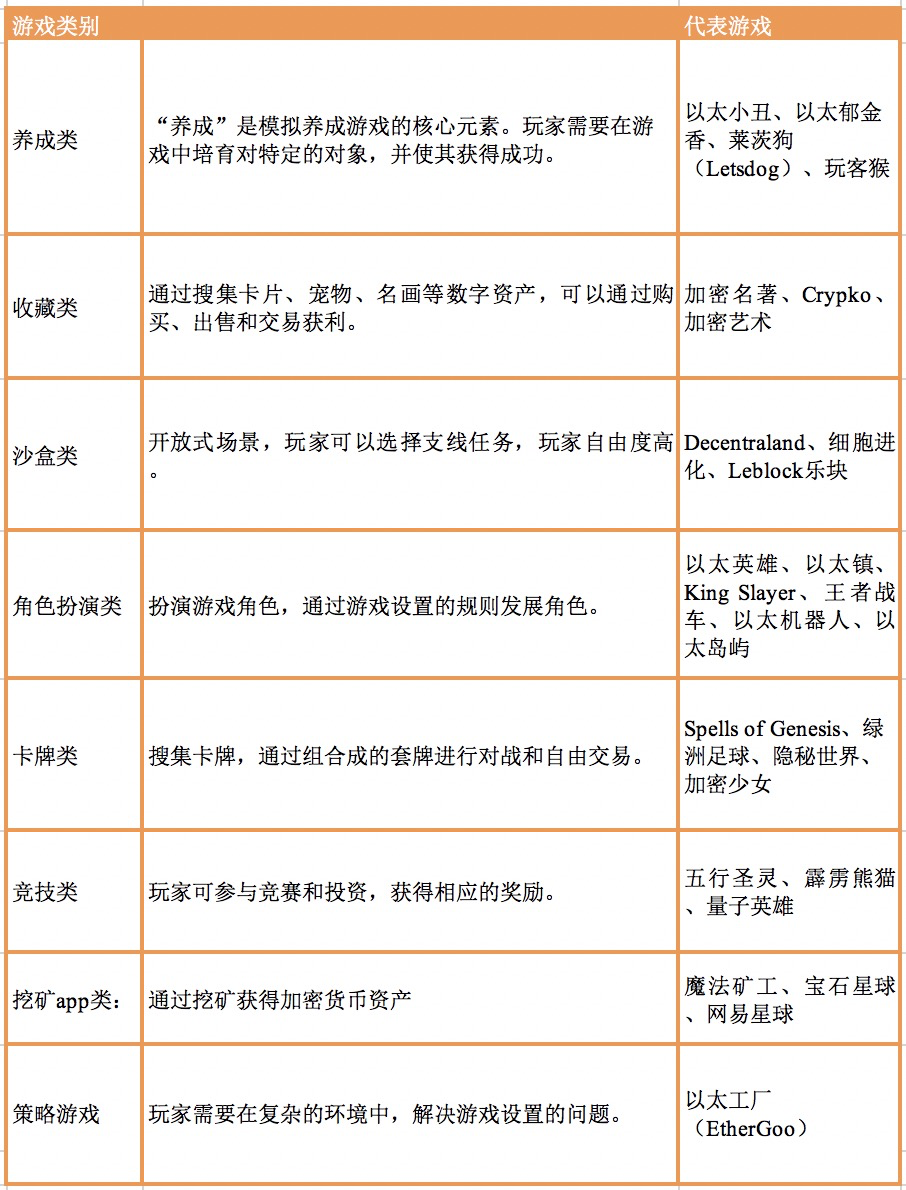
Source: 01 Blockchain Zero One Think Tank based on public information
At present, chain games can be roughly divided into games built on public chains and private chains. Among them, the public chain game is completely open and transparent, and the nodes are scattered all over the world; the private chain game is built on the internal blockchain of some enterprises, and the reading permission is not completely disclosed to the public.
image description
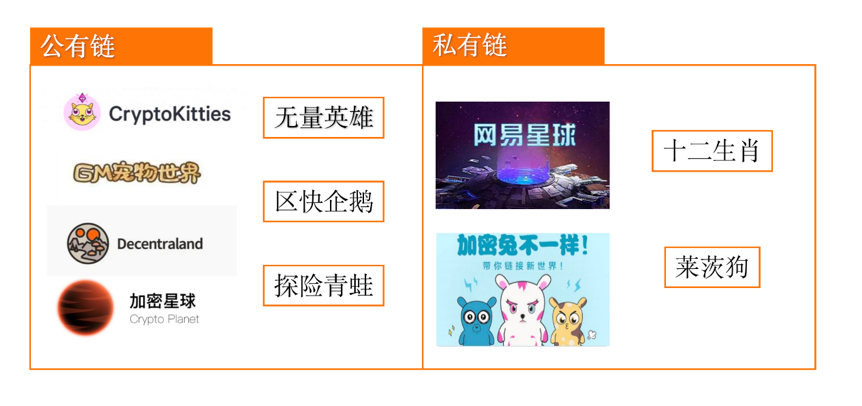
Source: 01 Blockchain Zero One Think Tank based on public information
In terms of transaction amount, Axie Infinity currently has a total asset value of US$131.55 million, with approximately 900,000 transactions and approximately 240,000 wallets. Far beyond other games.
image description
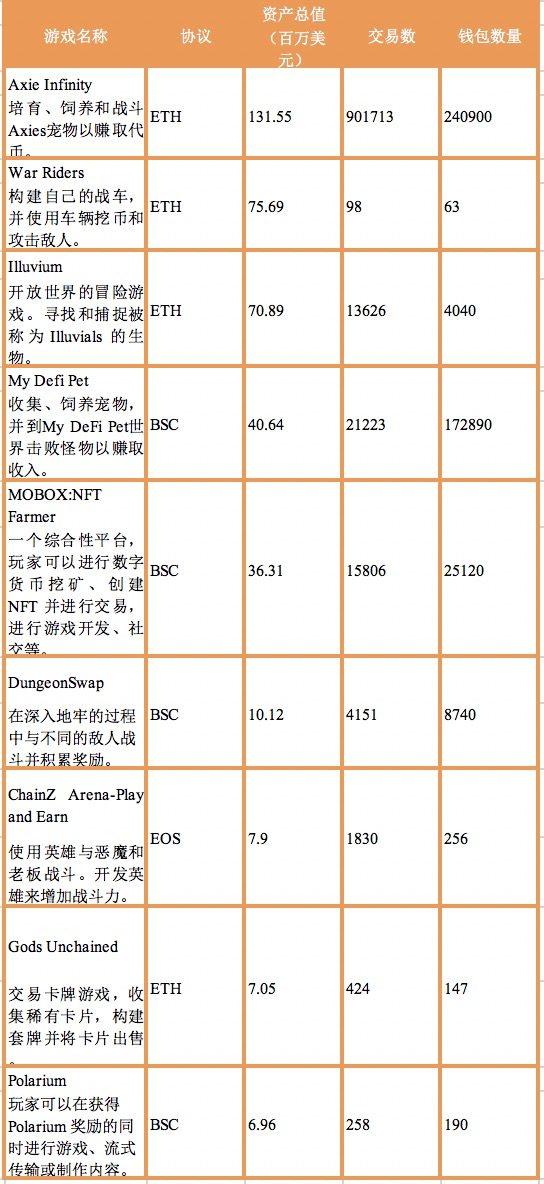
Source: 01 Blockchain Zero One Think Tank based on public information
According to the statistics of Blockchaingamer.biz, as of July 30, 2021, the total investment in the blockchain game field so far is 1 billion US dollars, and the amount for the whole of 2020 is 72 million US dollars. From the perspective of invested companies, Dapper Labs’ financing amounted to US$3.57, far exceeding other companies.
image description
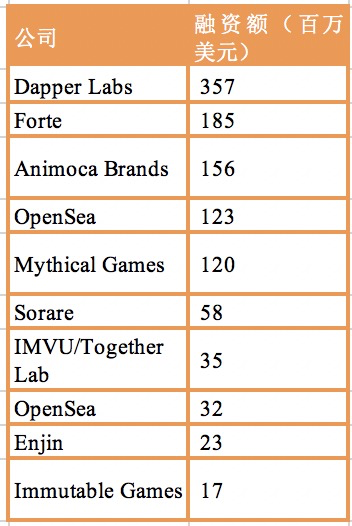
first level title
secondary title
(1) Three carriages driving the game economy
In the real world, consumption, investment, and net exports are the three carriages that drive the economy. Interestingly, when the game combines the blockchain to rebuild the development model of the game, the theory of "three carriages" can also explain how the blockchain drives the development of the game economy.
Consumption refers to internal demand, which provides the main driving force for economic development. The "internal consumption" of the game world also provides power for game development. Mobile game trading platforms such as Tao Mobile Games and TradingMao provide game players with trading services such as accounts, equipment, and props. But at present, only a few trading platforms protect the interests of users through insurance and contracts, and more platforms do not provide protection. In addition, among the uneven trading platforms, high handling fees and single types of transactions abound.
The transaction of traditional game assets is underdeveloped, and the more "developed" chain game transaction model greatly promotes "consumption". Smart contracts make game data impossible to tamper with, open and transparent, and quickly build trust; non-homogeneous token technology has spawned game assets with confirmed rights, preventing theft; game tokens provide a convenient exchange medium, expanding asset transactions and range of circulation. Economic elements such as contracts, assets, and currencies provide a safer, more transparent and convenient trading market for the game trading market, and promote the growth of game trading.
Investment brings growth momentum to the economy and promotes the upgrading of the economic model. In the game economic system, investment also determines the development level of the game. The development cost gap between games is very large. The development cost of a simple 2D mobile game Angry Birds is 100,000 US dollars. And when it is necessary to make client games, 3D, multiplayer, and various simulation scenes, each item costs a lot. Grand Theft Auto, a console game, cost $265 million to develop. In addition, the cost of trial and error in game development is very high. When the investment fails, there are only a bunch of "sky-high" codes left.
Tokens usher in a whole new era of investing in games. The emergence of tokens has allowed a large amount of capital to flow into the game market, developers and investors can share development costs, and sufficient funds can support the development and upgrade of various games. In addition, the quality of the game will also be directly linked to the inflow of tokens, so the market can adjust the flow of funds to games with more investment value, thereby promoting the development of the game market.
Import and export are economic flows between different countries, and the introduction of tokens makes "cross-border" transactions in the game world possible.
Prior to this, the games were in a state of "separation and separatism". In-game transactions were already difficult, and inter-game transactions were even more difficult. The "barter" method requires finding a specific counterparty, which is very difficult for games with a small number of players. Through the "commodity-currency-commodity" transaction method, the process is complicated, the handling fee is expensive, and there is no strong guarantee.
secondary title
(2) Reconciliation of "Player's Regret"
The last thing gamers want to admit is the loss, regret and self-blame after leaving the screen. Wouldn't we have a better life if we spent our gaming time in real life? Tech journalist Clive Thompson calls this sentiment "gamer's regret."
The player’s regret reflects the separation between the virtual world and the real world. The happiness and experience brought by the game are short-lived, and this short-term gain cannot promote real life. Players want games that extend their well-being into the real world.
Fortunately, the conflict between the virtual and the real is gradually being reconciled. Games have become an important outlet for today's young people to release their stress. Various hot game competitions have made gamers a profession, and even non-gamers have begun to have the fear of leaving "game socialization". When the game encounters the blockchain, the game time can be "valued", gamers can even seek a higher meaning in the game, and the "reconciliation trend" is pushed to another peak.
The video "NFT Game in the Philippines" released by Play-to-Earn tells the story of how Filipino rural residents earn living expenses through the chain game Axie Infinity during the epidemic. The sudden outbreak of the epidemic caused the unemployment rate in the Philippines to climb from 5.1% to 17.7%, and the repatriation of more than 100,000 Filipinos may continue to push up the unemployment rate. The game mode of "earning while playing" has attracted a large number of unemployed people to join, and even specialized training business"Earn money"The game's community Yield Guild. "Although the amount is not high, but being able to earn three or four hundred dollars is basically life-saving money for people here," said Gabby Dizon, co-founder of Yield Guild.

It is also a hobby, playing the piano and painting oil paintings are considered to be edification, but playing games are criticized as a waste of time. Behind the differential treatment is the difference in value recognition. Traditional hobbies are more linked to art and history, and have a striking "civilization" label. If the game carries other meanings, can it be compared with it? If so, then the token governance method introduced by chain games may make playing games meaningful.
Chain games can give players the right to develop and operate the game. Through transactions and voting, each player will become a developer of "chain games" to some extent. In the future, games may no longer be the property of giants such as Tencent, Google, and Facebook. Playing games is also a process of developing games.
In addition, the concept of metaverse has also become popular this year. Games such as Decentraland and The Sandbox allow players to buy and sell land and create various architectural and functional scenes. "Landlords" can even define the rules of their own territories. Players participate in the reconstruction of "social" norms and value systems, and the process of playing games is also the process of participating in the establishment of virtual civilization.
first level title
3. Impetuousness, inertia, threshold
Impetuousness and speculation are always prevalent in the cryptocurrency circle, and chain games are no exception. At present, blockchain games are often criticized as blockchain gamification, not game blockchainization. The name of the game as a blockchain is based on financial calculations. For players with game experience, the game mode and game experience of chain games are average.
According to a survey report by BlockchainGamer.biz in the second half of 2019, more than 60% of the respondents believe that the main obstacle to the mainstream adoption of blockchain games is still the quality of the games. Most of the various chain games that have gone on and on are finally eliminated in the torrent because of the lack of long-term vitality and investment value.
“A lot of these games seem to be forced exercises, basically trying to use the blockchain to monetize digital ownership,” said Serkan Toto, CEO and founder of Kantan Games Inc. pleasure."
The development model of chain games is also in urgent need of transformation, from the development model of "investment tools" to the game itself. Previously, most of the players were in order to make a profit, and the developers also used the mechanism of "sweeping wool" to maximize their funds, but when the developers reduced the profit sharing space, the players also left the game. The rise of GameFi this time is also full of speculation. How to reverse the previous development inertia will be the next big problem.
In addition, current blockchain games require every gamer to have an encrypted wallet and trade on an encrypted exchange. This requires players to have a basic understanding of cryptocurrencies and master the use of transactions. Transaction fees and a congested network can also act as hindrances. According to statistics from qkl123, the gas fee for a single transaction on Ethereum was as high as $17.95 in February this year. The above threshold may be "big to nothing" for players in the currency circle, but it will be a challenge to attract gamers who have never been exposed to cryptocurrencies, as well as younger players. A congested network is also a barrier for low-spec players and impatient players.
“I kept getting error messages about issues processing transaction fees, while warning that fees were higher than usual due to “blockchain congestion.” Then the Dapp stopped loading. After multiple failed attempts, I couldn’t even access the game. (I It took) about an hour to set up the cryptocurrency and transfer $50 worth of Ethereum to my Coinbase wallet.” A CryptoKitties player’s gaming experience.
first level title
4. Standing on the shoulders of the "blockchain", participants in blockchain games need to look further
Game journalist Rob Fahey famously said in 2008: "There is no avoiding it: Soon, everyone will be a gamer."
According to Newzoo's "Global Game Market Report 2021", in 2021, the total number of global game players will exceed the 3 billion mark, which is a year-on-year increase of 5.3% compared with 2020. Global game revenue in 2021 will total $175.8 billion. With a market size of US$88.2 billion, the Asia-Pacific region has become the region with the highest proportion of game revenue in the world, while North America, Europe, and Latin America are affected by the epidemic, and revenues have declined. According to Newzoo, it is estimated that by 2024, there will be 3.32 billion game players, and global game revenue will reach 218.7 billion US dollars.
The huge game player group and the total market provide a good production soil for the development of blockchain games. The vigorous development of games has become unstoppable. Whether chain games can become another breakthrough in blockchain applications, or become the final form of game development, we don't know. At present, the chain game has gathered a group of enthusiastic participants, but its future depends on the joining of more participants.
"It took off in a way that none of us expected," Donald Mustard, Epic's chief creative officer, said of the Metaverse.
The most refreshing blockchain game this year is Metaverse. Virtual real estate can be traded, NFT exhibition halls and trading centers support digital art, and virtual shopping malls can deliver clothing and food directly to your doorstep. The Metaverse appears to be another parallel dimension. Calling the metaverse a game, the format of the game seems to be too small to support the side of the metaverse that is close to "reality". But in fact, is it our imagination that limits the pattern of the game? Based on the blockchain, the imagination of the game may be liberated like never before.
"Don't just wait for the day, but wait for the century" --- "Laws of the Earth" Steward Brand
The development model of blockchain + game depicts an extremely beautiful future. The game introduces a new economic system, game players can participate in the underlying construction of the game, and the metaverse makes us sigh the imagination of the future of chain games. But the participants seemed to be too anxious, one wave fell, and another wave rose again. Paying unilateral attention to the financing function of chain games, chain games will only exist overnight. Only when high-quality and breakthrough games are created with full of feelings and focus, chain games will develop for a long time. Standing on the "shoulders" of the blockchain, participants in blockchain games need to look further.
